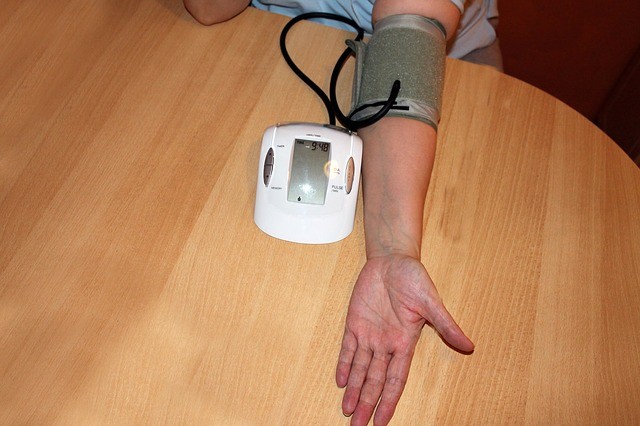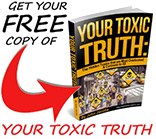How would you know if your blood pressure is too high? Check out the article we found over at Dr. Axe.
High blood pressure, or hypertension, affects around 70 million adults in the United States, that is, every 1 of every three Americans. Even quite common, this condition can be controlled, but you need to know its warning signs and treat it adequately, on time.
Hypertension may also lead to numerous other serious health conditions, such as heart attacks, stroke, kidney diseases and chronic heart failure.
In most cases, people with high blood pressure experience no symptoms, even when their blood pressure readings reach excessively high levels. The terrifying reality is that one of five adults in the United States with hypertension is not aware of it.
However, fortunately, numerous experts claim that a healthy diet and regular exercise you can effectively prevent and treat high blood pressure.
The measurement of blood pressure shows two numbers, showing two distinct pressures. The first number shows the systolic pressure, or the blood pressure during the heart beating while pumping blood. The second number shows the diastolic pressure, which is the blood pressure between heartbeats, when the heart is resting.
Below are the ranges of blood pressure:
- Normal: Lower than 120/80
- Prehypertension: 120–139/80–89
- Stage 1 high blood pressure: 140–159/90–99
- Stage 2 high blood pressure: 160 and above/100 and above
In most cases, the patient experiences no symptoms when the blood pressure raises. Yet, some common warning signs are confusion, chest pains, headaches, irregular heartbeat, vision issues, ear noise or buzzing, fatigue or nosebleeds.
It is of high importance to control blood pressure levels and react on time as soon as you experience some of the symptoms of hypertension. One reason for this is the following: at the age of 50, total life expectancy is 5 years longer for people with normal blood pressure than for those with high blood pressure.
Furthermore, over 360,000 of people in America died in 2013 due to hypertension as a major or contributing cause. This is approximately 1,000 deaths on a daily basis, which makes hypertension an alarming and severe health issue that requires a serious treatment and prevention.
Also, it may raise the risk of numerous other health conditions, like:
- Chronic heart failure: Studies indicate that 7 of every 10 people with chronic heart failure have elevated blood pressure levels.
- Metabolic syndrome: The hypertension symptoms elevate the risk of metabolic syndrome, which is a combination of three or more of these health conditions: high blood sugar, abdominal obesity, high triglyceride levels, low HDL (“good”) cholesterol, and high blood pressure.
- Eye problems: Vision loss can be caused by narrowed, thickened, or torn blood vessels in the eyes, due to high blood pressure.
High Blood Pressure vs. Low Blood Pressure
Aging, along with its other normal changes it causes, leads to an increased risk of both, low and high blood pressure.
As we mentioned earlier, these are the values that determine the boundaries low blood pressure, high blood pressure and normal blood pressure:
- Low blood pressure or hypotension: Lower than 90/60
- Normal: Lower than 120/80
- Prehypertension: 120–139/80–89
- Stage 1 high blood pressure: 140–159/90–99
- Stage 2 high blood pressure: 160 and above/100 and above
High Blood Pressure
Here are some of the most important facts concerning hypertension and its symptoms:
- About 70 million American adults (29 percent), or 1of every 3, suffer from hypertension.
- Only about half (52 percent) of people with this disease maintain it under control.
- Around 1 of 3 adults in the U.S. has prehypertension, or blood pressure levels which are higher than normal, but yet not in the range of hypertension.
- The cost of this disease on an annual basis is $46 billion in America, which involves the medications for the treatment, health care services, and missed days of work.
In most cases, as the blood pressure levels are elevated, the person does not experience any specific warning signs. However, some of the most common symptoms include:
- Confusion
- irregular heartbeat
- Headaches
- tiredness
- ear noise or buzzing
- vision changes
- nosebleed
- chest pains
Low Blood Pressure
Here are some of the most prominent facts related to low blood pressure:
- Chronic low blood pressure which causes no symptoms is not serious in most cases.
- In most cases, the person experiences a sudden drop in the blood pressure as soon the person stands up from a lying position or vice versa. Moreover, another low blood pressure type occurs in the case a person stands for a long time, and it is known as mediated hypotension.
- Around 10-20% of people over age 65 suffer from postural hypotension.
- The issue should concern you if the blood pressure drops suddenly, as then the brain is deprived of a proper supply of blood, and may cause lightheadedness and dizziness.
- Aging prevents the proper blood flow to the heart muscle and the brain, which leads to an accumulation of plaque in the blood vessels.
The situation is far from serious if you do not experience symptoms of low blood pressure. According to numerous doctors, it would be dangerous only when the chronically low blood pressure levels cause noticeable symptoms, like:
- lack of concentration
- rapid, shallow breathing
- blurred vision
- dehydration and unusual thirst
- dizziness or lightheadedness
- cold, clammy, pale skin
- fatigue
- depression
- nausea
- fainting (called syncope)
Here are the most effective natural ways to treat hypertension:
- Essential Oils
Essential oils reduce emotional stress, have strong antioxidant properties and thus reduce oxidative stress and dilate arteries, so they effectively lower blood pressure. The best essential oils for this cause include lavender, neroli, ylang, clary sage, frankincense and sweet marjoram. You can add a few drops of the essential oil to your lotion of carrier oil and massage your body, or use them in a diffuser.
- Reduce Stress
Stress raises blood pressure, so you should practice regular relaxation methods like meditation, deep breathing, walks in nature, healing prayer and the like, which will help you relax, calm and reduce blood pressure.
- Physical Activity and Exercise
Exercise and regular physical activity can help you lose excess weight and reduce blood pressure. For best results, engage in some physical activity and/or exercise for at least 20 minutes every day, while adolescents and children should regularly get an hour of physical activity.
Next Article: The Herbs That Help Lower High Blood Pressure
Read full article: High Blood Pressure Symptoms You Can Reverse Naturally







Trackbacks/Pingbacks
[…] Hypertension […]